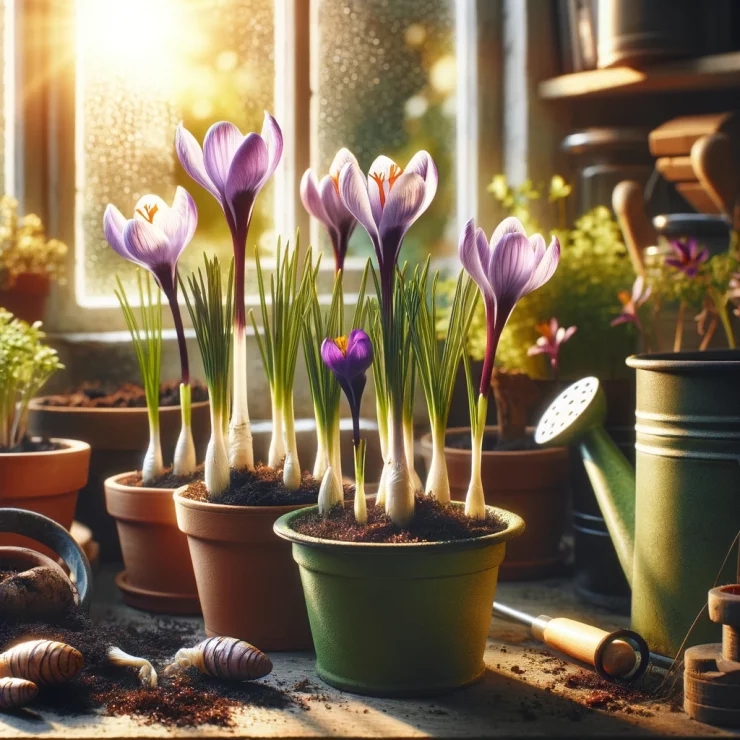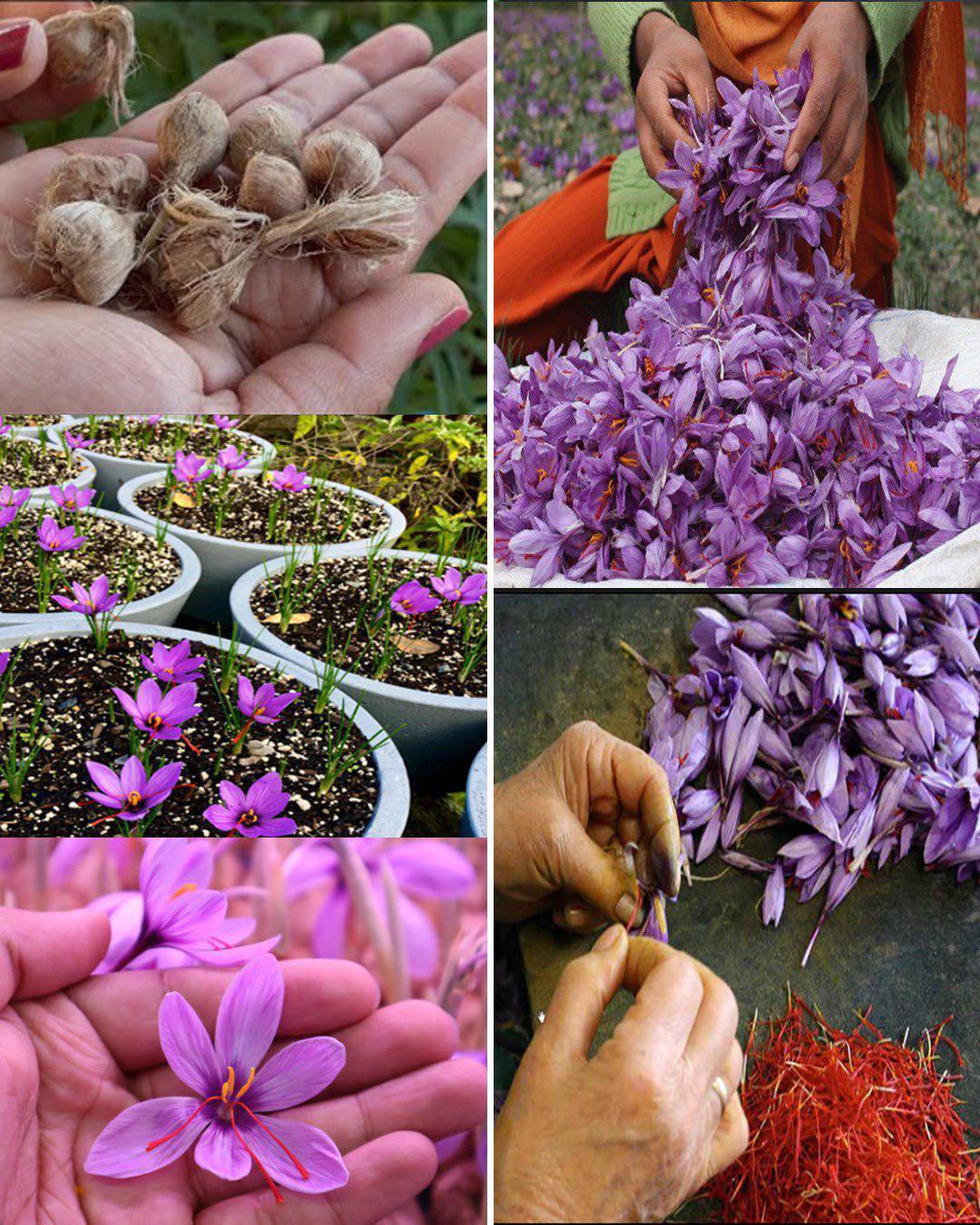Saffron, renowned as the world’s most expensive spice, is prized for its vibrant color, unique flavor, and medicinal properties. Derived from the delicate threads of the Crocus sativus flower, saffron has been coveted for centuries by chefs, herbalists, and artisans alike. While traditionally cultivated in regions with specific climatic conditions, it’s entirely possible to grow saffron at home, allowing enthusiasts to savor its exquisite qualities firsthand. In this guide, we’ll explore the steps to successfully cultivate saffron in your own garden or indoor space, unlocking the secrets of this luxurious spice.

Selecting the Right Bulbs:
The first step in growing saffron is acquiring high-quality saffron corms, which are the bulb-like structures that produce the flowers. It’s essential to purchase corms from reputable suppliers to ensure viability and authenticity. Opt for large, healthy corms with firm texture and no signs of mold or damage. Saffron corms are typically available for purchase in late summer or early fall, the ideal time for planting.
Choosing the Right Location:
Saffron thrives in well-drained soil and full sun, making it suitable for a variety of garden settings. Select a sunny spot in your garden or a location with at least six hours of direct sunlight per day. Ensure that the soil is loose, sandy, and rich in organic matter to promote healthy growth. If planting in containers, use a well-draining potting mix and place the pots in a sunny area, such as a patio or balcony.
Planting and Care:
Plant saffron corms in late summer or early fall, ideally around late August to early September, to allow them to establish before winter dormancy. Dig shallow holes or trenches about 4-6 inches deep and space the corms 4-6 inches apart. Place the corms with the pointed end facing upwards and cover them with soil, lightly pressing down to secure them in place. Water thoroughly after planting and continue to water regularly, keeping the soil evenly moist but not waterlogged.
Harvesting Saffron:
Saffron flowers typically bloom in the fall, usually from late September to early November, depending on your location and climate. Each flower produces three bright red stigmas, which are the prized saffron threads. To harvest saffron, carefully pluck the stigmas from the flowers using tweezers or your fingers. Handle the delicate threads with care to avoid damaging them. Once harvested, saffron threads can be dried and stored in an airtight container for future use in culinary or medicinal applications.

Overwintering:
After flowering, saffron plants enter a period of dormancy during the winter months. Mulch the soil around the plants to protect the corms from freezing temperatures and moisture loss. In spring, as temperatures warm up, saffron plants will begin to sprout new foliage, signaling the start of a new growing season. Resume regular watering and fertilize lightly with a balanced fertilizer to support growth and flowering.
Growing saffron at home is a rewarding endeavor that allows you to experience the magic of cultivating the world’s most expensive spice right in your own backyard or indoor space. By following these simple steps and providing the right growing conditions, you can enjoy a bountiful harvest of saffron threads to elevate your culinary creations and enrich your life with the exquisite flavor and aroma of this precious spice. So why not embark on the journey of growing saffron and add a touch of luxury to your home garden?
News
The WILDEST ENDINGS Of Week 12
Week 12 in professional football proved to be an unforgettable chapter filled with come-from-behind rallies, nerve-racking final possessions, and improbable last-second heroics. Fans witnessed an array of shocking comebacks that had them clutching the edges of their seats until the…
Keaton Wallace’s CAREER-HIGH 27-PT Performance In Chicago!
Keaton Wallace delivered a stunning performance in Chicago that not only showcased his growing confidence but also served as a milestone in his professional basketball journey. The rising guard dropped a career-high 27 points, captivating fans with a display of…
Damian Lillard Scores 30 Points vs Magic
Damian Lillard put on a show against the Orlando Magic, lighting up the scoreboard with a smooth 30-point performance that reminded everyone why he is regarded as one of the most lethal offensive threats in the NBA. From deep threes…
Jalen Green Was UNSTOPPABLE – 34 Points In Denver!
Jalen Green delivered a scintillating performance in Denver, putting on display the unique blend of athleticism, creativity, and confidence that has captivated fans and pundits across the league. From the opening tip, the Houston Rockets guard showcased unwavering energy, attacking…
Stephen Curry Makes It Look EASY – 31 Points In Minnesota!
Stephen Curry put on a shooting clinic in Minnesota, dazzling fans and opponents alike with his signature blend of skill, flair, and efficiency. The Golden State Warriors point guard made the game look effortless as he racked up 31 points,…
Final 3:07 CRAZY ENDING Timberwolves vs Warriors 👀
The recent clash between the Minnesota Timberwolves and the Golden State Warriors was a game that will be etched in the memories of fans for years to come, particularly for its heart-stopping final 3 minutes and 7 seconds. This wasn’t…
End of content
No more pages to load











